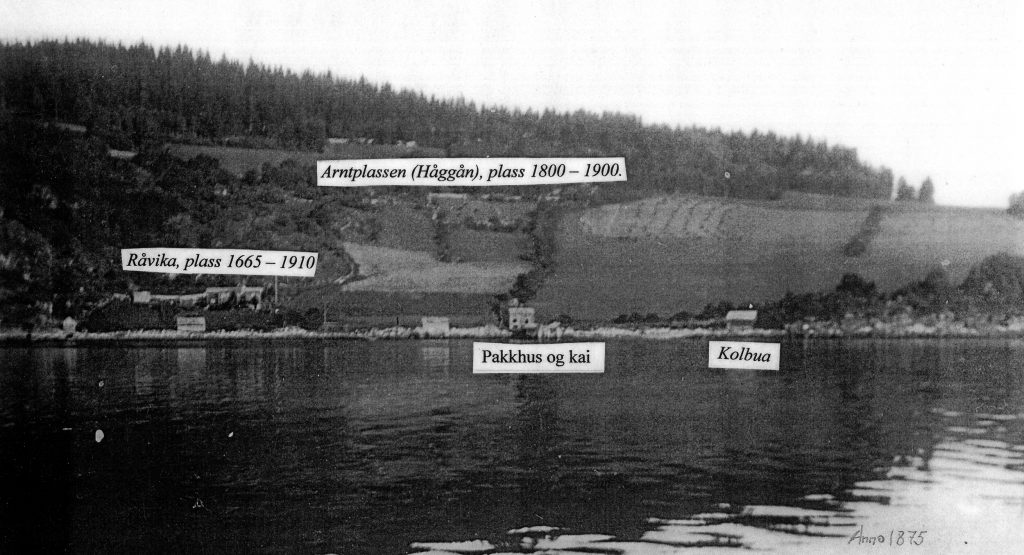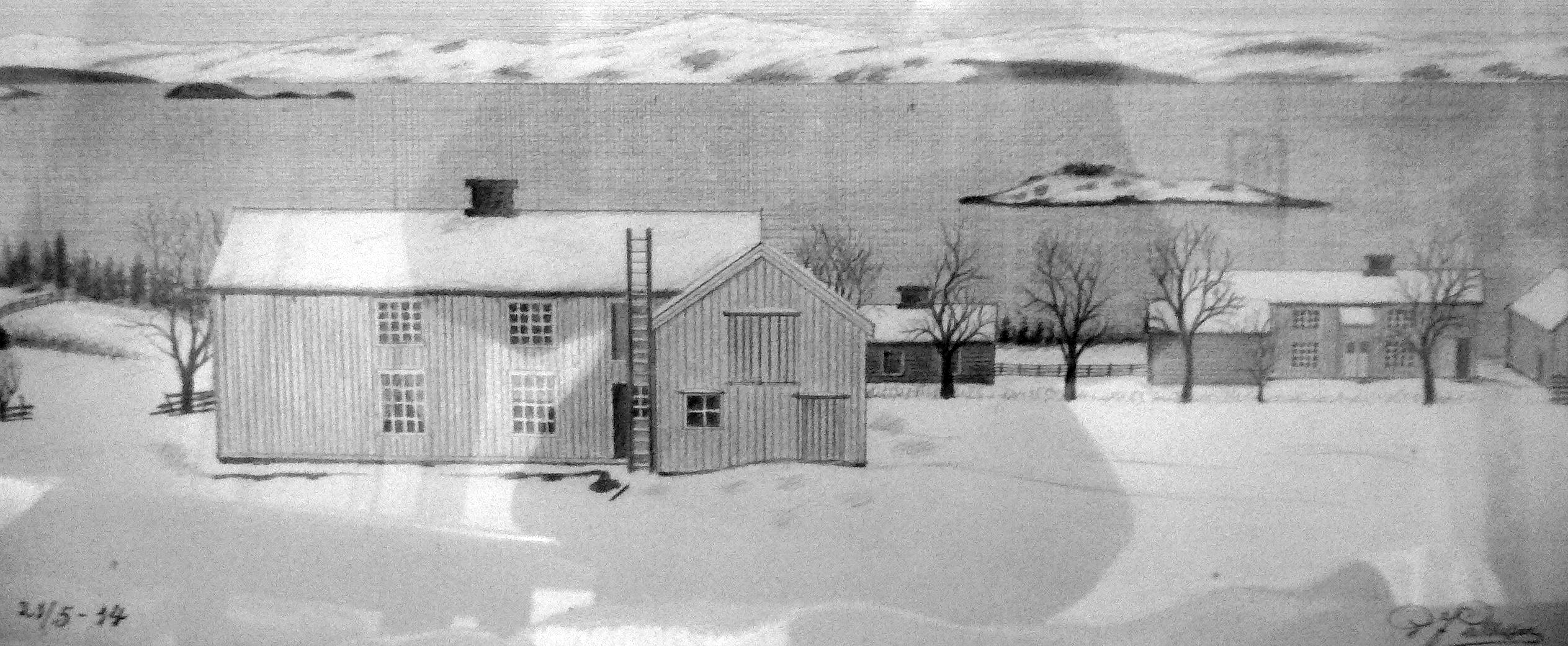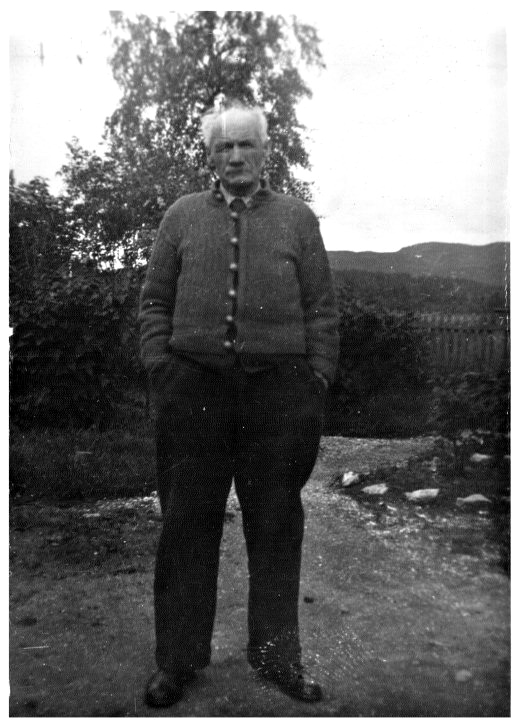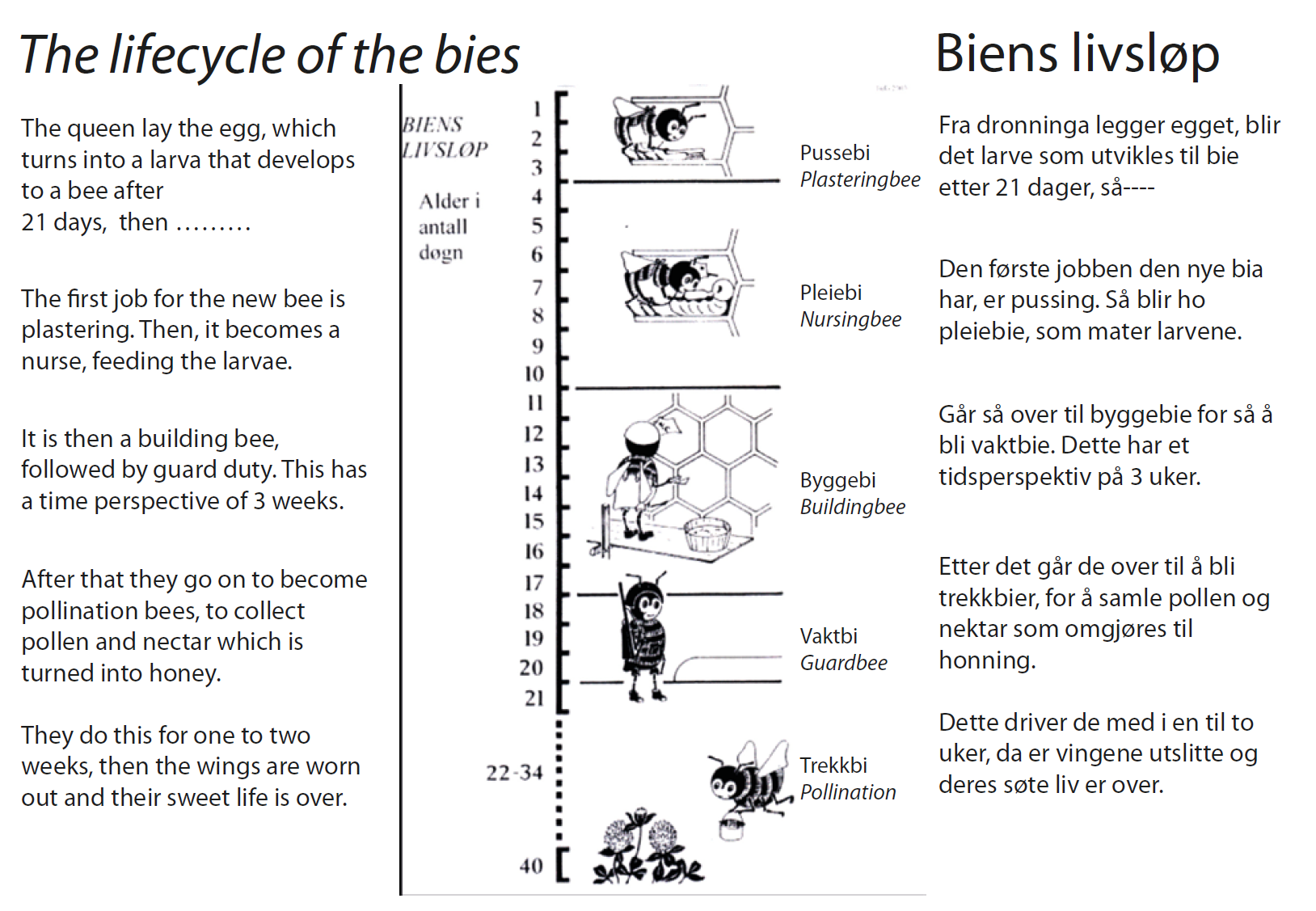The croft was situated were the houses are today.
This place has been in the same family from 1865 when Gudtorm (crofter and tailor) lived here with his wife Gurine. He came from Gudbrandsdalen and was married twice. In 1937, the youngest grandchild bought the home, and today it is a holiday home. The name “Fjuru” probably comes from the long shoreline which makes it possible to go out to Kvamsholmene at low tide. This means that the islets become land-locked for a little while.
There are several protected seabirds nesting on the islets. In the past, both eggs and down were collected there. Sand was also taken from, and the islets were used as sheep pasture until quite recently.
Gudtorm was as mentioned a beach sitter. A beach sitter did not have land and livestock, but had right of use down to the sea. Together with two brothers he came from Lom in Gudbrandsdalen. Famine and bad times forced them, along with many others, to wander north to seek livelihood. The eldest of the brothers, Paul, settled in Verdal. He would have been one of the rebels in the “Levanger Rebellion” in 1851. This rebellion (Tranerørsla) was dramatised and set up as a theatre play in Levanger under the name “Raud Winter” (Red winter). Paul had to go to the house of corrections/jail for incitement.
The other brother supposedly ended up in Lofoten. Godtorm who was the youngest, born 1830, was married to Gurine from Stiklestad parish. They settled in Fjuruan around 1860 and had two children. The son Lørns married Ingeborg F. Valberg and they had 10 children. But shortly after the last child was born, Lorns, 45, died. Ingeborg was left and, in addition to raising all the children, also had to do duty work on the farm to pay rent. It was probably hard, but it went well and all the kids grew up. In 1937 one of his sons (Leif) bought the place and some land as well.
Fun fact: The floor in the boathouse north of here has been floor in Sakshaug old church. Before it arrived there it was a barn bridge at Ner-Kvam. When the new barn was built, the old barn was demolished and Leif got the barn bridges for boathouse floors. Recycling in action!
There is an old barn here that probably originates from this was a croft/smallholding between 1850 – 1910. Two generations lived at this small place. They grew some potatoes, but everyone living here were fishermen. The last crofters here (Ola and Paulina) had many children who all died at a young age, just one lived until he was 30. In 1910, Kattaberget was purchased as an additional land for Sveet (Svebakk), a home right above here owned by Jon and Olava Kvam.
There is a story that portrays what life was like here: There were hard times and the eldest wife lived long after the husband died, then in the poor house. While the husband still lived, he and another man went to the Stjørnafjorden to fish for herring one autumn. The fishing had been poor here in the fjord, but further south fishing was good. They left with their boat and fishing gear. -However, as it turned out, this autumn the fishing was not great in the Stjørnafjorden. Just after they left, there was a large influx of herring in the fjord here.
The wife found 2 fishing yarn in the boathouse that were in such poor condition that the men had left them behind. On low tide, the wife went out and set the yarn, harvesting the herring at the next low tide. When the men returned in late autumn, the herring had left the fjord here as well. But the wife had salted two barrels of herring from the non traditional fishing.
Litlmarka and Holmsveet were two farms situated west of Kattaberget. The places were sold to Anton Grøn (Kvam) and added to Kvamsholmen as independent farms in 1865.
Trøa and Dammen were 2 crofts situated just above from here, both erected around 1830. The first inhabitant in Trøa was called Morten, followed by Rasmus and Marta. Rasmus died in 1860, 78 years old. The widow stayed at the farm until about 1870, when the land was laid out for pasture.
In Dammen it is probably the same family that has lived here until the present. A recurring name here is Ola. The last Ola who was a crofter here was married to Olina from Haselvika. There were several boys from this area who found their wifes from the coastal areas around the Stjørnafjorden. The reason was probably that at that time the area had an abundance of herring,, and many of the menfolk went fishing there, – and engaged in other activities as well …
Ola and Oline bought Dammen in 1930 and the croft era came to an end. The name comes from the large pond above the houses, but the pond was converted into cultivated land.
The river running here collects water from several hamlets in Utøy. Consequently, it has many names: “Hoinsåkerelva” river, as it is called here, forks just above the waterfall, where it is called Kvamselva river, and further up it becomes the Oppigagardsbekken stream.
If you follow Hoinsåkerelva river further up, it becomes the Melhuselva river. The river is joined by a tributary (side river), which becomes Sannaelva river. Further up, the Melhuselva river becomes the Jystadelva river, which in turn becomes Lokanalen channel. It is no wonder it had to be (named) “Storfossen” waterfall! Go a little further up and you will see the waterfall.
This waterfall was used in the 1620s to run a stream grinder. The parcel of field above is today named: “Kveinnhusåkeren”. Around the middle of the 19th century a sawmill was built here, powered by hydropower. It stood until 1905, and in 1930 a cement foundry was started at the same place. They brought sand from the shoreline below, and water from the river. If the river went dry in the summer there was a water hole just above here: “Allergodthølet” – No matter how dry it was, there was always water there.
But today the river surges down only for the benefit of us who enjoy nature. And if you sit under the waterfall a spring evening, you can probably hear the NØKKEN*!
*a mythical creature from Norwegian folklore
Asphaugen was the croft in which Sivert Larson and his wife Ingeborg Anna Jystad took over on the 3rd jaunary 1850. The croft was separated from the farm owned by the mother Beret, which explains why there was so much land attached to the croft. Sivert and Ingeborg had two daughters, Anna Bergite and Jonetta. The space they cleared was relatively large, because they had a cow, 4 sheep and a pig.
Sivert’s father committed suicide when Beret lay in childbirth with Sivert. Beret got to take over the farm in 1847, and married Falkor Falkorson, who took the name Undersaker. Falkor was 21 years younger than Beret, and they were probably meant to run the farm for a long time. Thus Sivert (who had allodial rights) was given a piece of land for a croft (Asphaugen). But Falkor and Beret struggled economically and in 1851 the had to sell the farm to the neighbour at Hegdal. They kept some land for themselves down by the sea here, and called the home “Kårs”. It was later sold to Kristian Rostad, who named the place “Lystad”.
Asphaugen is not mentioned in the census in 1891.
Below Asphaugen (which you passed, or will come to soon) is a bay where you can walk almost 100 meters out at low tide. You have more of these along the cultural trail. Here one could put out a fishing line at low tide, and at high tide the fish was caught. Then at low tide, one could harvest the catch.
On the seashore you can see the stone wall which is the last remnant of the quay that was built here by Jørgen Richter after he came to Rostad in 1823 (He took over the farm in 1826 from his father in-law Ole J. Rostad).
Regular boat-service
On the seashore you can see the stone wall which is the last remnant of the quay that was built here by Jørgen Richter after he came to Rostad in 1823 (He took over the farm in 1826 from his father in-law Ole J. Rostad).
On the fjord, scheduled traffic with calls to the quay started, and there were also frequent calls with both freight and passenger traffic from Trondheim, Levanger, and elsewhere. The water way was at the time the “main road” to Rostad before motorised traffic over land was relevant.
the quay was used to route traffic until approximately 1950. While the brickworks at Rostad were still in operation, a lot of wood was used. Thus, the forest was also cut down, and for a long time Rostad was heated with coal. Especially after it became an orphanage. To the east of the quay, a house was built which served as a coal store (“Kolbua”). Boat loads of coal came in the summer. The coal was stored here, and driven to the farm in winter.
The coal hut was 30 meters further north of the quay. When the coal came to Rostad by boat in the summer, it was driven in a “buggy” to the coal hut. In the winter, the coal was transported to the farm with a sledge.

The Rostadsjøen lake with the quay approx. 1855 The picture is from approx. 1875 Notice the packhouse and the coal hut A bathhouse was built in the pack house after Rostad became an orphanage in 1902. The quay was in use until approx. 1950
Opposite the quay there was a bathhouse. Water was pumped up from the sea and warmed up in the bathhouse. The stove in the bathhouse was in use both in summer and winter.
The Richter-oak
At Råvika, at the Rostad side of the fence, The Richter-oak stands where Ole Richter planted it as a 12-year-old in 1841.
There were two crofts called Naustgjale. The lower one was built around 1850 and was situated right below here – where the cottage “Solbu” is located. It was Ola Sivertsøn and his wife Olava Henriksdtr. who cleared this place. They had 5 sheep and “Sowed” 4 barrels of potatoes. In addition, Ola was a tailor. But after 1875 Ola became blind and then they moved here – where Naustgjale 2 was situated. It was probably the children (Lorns and Johannes) who helped them build this place. But this place was not long in existence.
After Ola moved from Naustgjale 1 something happened that was very unusual at the time: The farm owner (Hegdal) was searching for a new crofter for Naustgjale, and it had to be a competent man. But a woman without a man came to Naustgjale, Ragnhild Sivertsdtr. b.1837. Her mother was from Høsslandet and her father was a sailor who drowned when young.
About Ragnhild it was said: She can do everything better than a man. She was a strong woman with a good head on her shoulders. In the summer she was a milkmaid at Simadalen in Nordfjellet mountain, and in the winter she was “taus” (servant girl) at Hegdal. Additionally, she was a crew member on cargo sloops from Inderøy, which sailed to Trondheim with agricultural goods and returned with merchandise.
There is a story about Ragnhild: Once on a return journey on a cargo sloop from Trondheim, it could have come to a bad end if not for Ragnhild. The sloop owner and one of the crew had been partying in town just before departure, and was in no shape for the journey. The owner nevertheless gave the order to cast off. When they reached the Strindfjorden, bad weather hit them and the sea broke over the sloop.Ragnhild singlehandedly steered the sloop home, as the other 2 had fallen asleep under a canvas . Ragnhild was praised, but the other two was beat up by the sloop owners sons. The were supposedly teetotalers and did not approve of such behaviour.
Around 1900, Ragnhild began to struggle with her health, and moved to the Sjøenget where she lived for the rest of her life. The houses in Naustgjale were demolished and the land was returned to the farm again.



